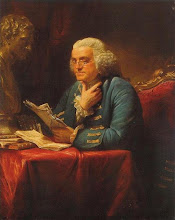
http://www.frayerchess.com/
Ok, you have a tournament book that is focused and plays a narrow variety of opening moves to a good depth. Now you need to hand tune it and keep it current. But what exactly are you tuning it to? The answer is; primarily your entire playing system. Which includes your hardware and its capabilities, your engine and its configuration settings, as well as the ever changing lines being played by your opponents.
There is no such thing as a perfect book that has all the answers to all the lines. A good opening book is a thing that is in constant flux. While in the human chess world an opening repertoire may serve a player for many years with only minor changes, it is not so in engine chess. Computers have a way of finding their way around seemingly impassable winning lines with frightening elegances and speed.
To get started; go on line and play 50-60 games at your desired time control. A hand tuned book is most certainly sensitive to time control changes. (by that I mean use one book for 3-0 play one for 16-0 and another for 60-0 + times) You may use the same book but with different tuning. Do not fiddle around with your engine configuration settings to much. (If you are using Rybka 2.3.2a the default settings are the strongest)
Now take the games that you have just played and go off line and into the engine GUI. Open up the My Internet Machine Games database file and do a bit of weeding. At first just go ahead and delete all the draws and games that go fewer than 35-40 moves. Now physically look at the games that you won. Games that you won from opponents that had inferior hardware to yours can be deleted. This should leave you with the games that you lost and a few that you won.
Take these games and get to work, the idea is to alter the opening book manually not only to avoid the loses but to find a winning line form before the point your evaluation number went negative. Make sure that you have the opening book that you wish to alter loaded and go to the book display. Right click the mouse on the book display window and activate allow move adding. Now any moves that you make manually while the engine is in infinite analysis mode will be added to the book. (as green play in tour moves)
If the book line went wrong before the engine engaged it may be necessary to mark some book moves red and try a deferent way. (book moves are turn red by right clicking on the moves and choosing the do not play in tournament option)
When the engine analysis mode is used (in most engines) it reverts to a brute force search. Where as in normal play all kinds of pruning tricks are used to reduce the number of moves the engine must look at. My point is that when going over played games in analyses mode you can often find strong moves that Rybka discarded in early pruning as being unproductive. It take some time and patients to get the search depth to an effective level. (time dependent on your hardware of course) When you are analyzing a game that you have lost, that had an average search depth of 16 ply you will probably need to go 19-20 ply in a brute force search starting several moves before the detectable swing in positional value to find a good refuting line.(more incomprehensible explanations on the dark art of book tuning early in the next week)
I noticed this week that some Mephisto computer ads appeared on this blog. I had one of these in the early 80s and was very found of it. It was not the model that moved the peaces on its own but was made of solid wood and was quite elegant, as well as a strong practice partner. Many of the fine products linked with this site may be worth checking out…




